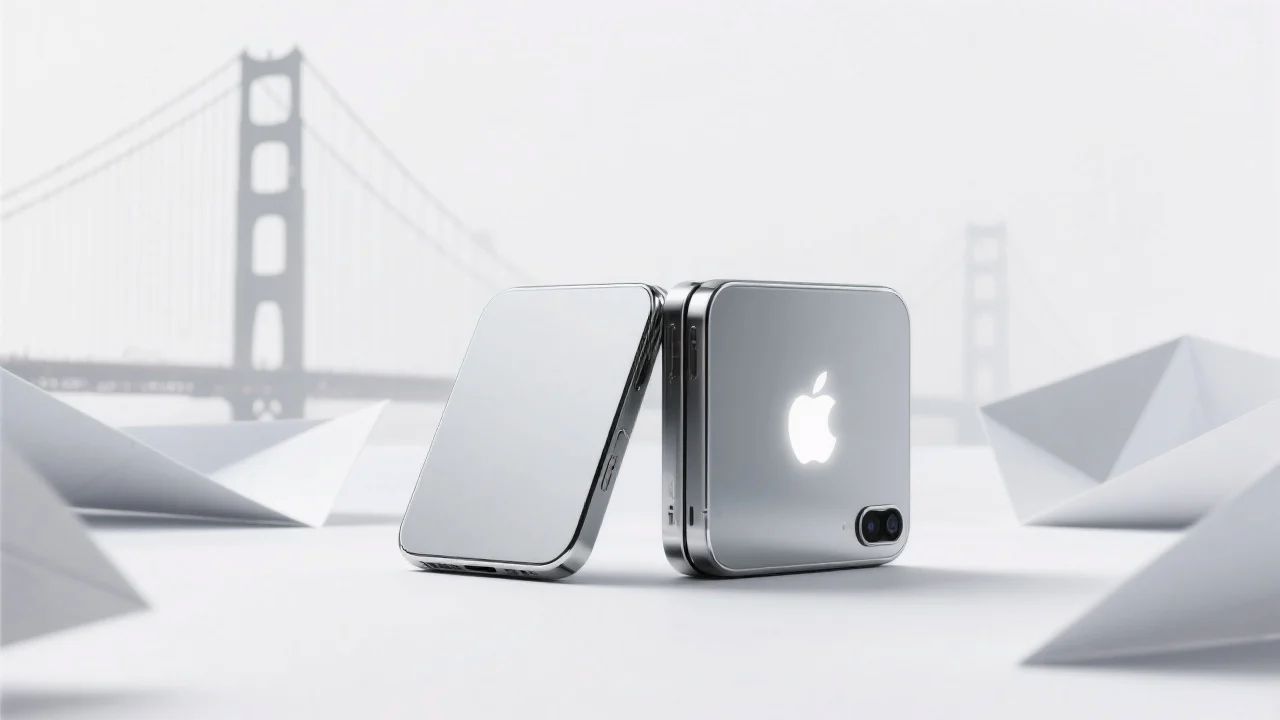
The Long Wait for a Foldable iPhone Is Nearly Over
For years, the idea of a foldable iPhone has hovered somewhere between fever dream and vaporware.
Samsung, Google, and Motorola have all taken their swings at foldable phones, with varying degrees of success and a healthy dose of skepticism. Apple, meanwhile, has watched from the sidelines, quietly filing patents and letting the market mature. Now, as we move through 2025, the fog is finally lifting. Apple’s first foldable iPhone is real, and it’s coming, just not as soon as some might hope.
What We Know: The Book-Style Fold, Not a Flip
Forget the flip-phone nostalgia. Apple’s foldable is shaping up to be a book-style device, more akin to the Galaxy Z Fold than the Z Flip. The latest leaks and analyst reports point to a device with a 5.5-inch cover display and a 7.8-inch main screen when unfolded, making it a pocketable tablet that folds down to something only slightly chunkier than a regular iPhone. The engineering focus is thinness, rigidity, and a display that’s as close to crease-free as the laws of physics allow. Samsung Display is reportedly supplying the panels, but Apple is demanding a custom process that integrates the touch sensor directly into the display, shaving off precious millimeters and grams in the process. This isn’t just a spec sheet flex; it’s a statement about what Apple thinks a foldable should be: elegant, uncompromised, and, of course, expensive.
The Price of Innovation: Prepare for Sticker Shock
If you thought the iPhone Pro Max was pricey, brace yourself. Early estimates peg the foldable iPhone’s price between$2,000 and$2,500, and that’s before tariffs and the inevitable Apple tax. For context, Samsung’s latest Z Fold 6 starts at$1,900, and even that feels like a luxury. Apple’s bet is that there’s a segment of users, call them the “iPad-in-your-pocket” crowd, who will pay for the privilege of carrying a device that can morph from phone to tablet with a flick of the wrist. The company reportedly plans to produce 15 to 20 million units for the first run, enough to satisfy early adopters and keep the device rare enough to feel exclusive for at least a couple of years. Demand, analysts say, will be somewhat limited by the price, but that’s never stopped Apple from redefining a category before.
The Tech: Thin, Crease-Free, and (Maybe) Touch ID
Apple’s obsession with thinness is legendary, sometimes to a fault. Here, it might actually pay off. The foldable iPhone is rumored to be just 4.5mm thick when open, thinner than any current iPhone, and about 9mm when closed. The display tech is the real story. Samsung’s new in-cell touch process, developed specifically for Apple, promises a lighter, more rigid panel with almost no visible crease. Under-display cameras are expected, but Face ID might be out, replaced by a Touch ID sensor in the power button due to space constraints. It’s a subtle but telling shift. Apple is willing to bend, literally, some of its own rules to make this device work.
Why Now? Apple’s Calculated Patience
Apple’s timing is, as always, deliberate. The company has watched competitors stumble through early foldable launches, learning from their mistakes: creased screens, clunky hinges, software that never quite felt right. Now, with the hardware finally catching up to the vision, Apple is ready to enter the fray. The foldable iPhone is expected to launch in fall 2026 as part of the iPhone 18 lineup, with production starting late this year. That’s a long runway, but it gives Apple time to refine the experience and, crucially, to make sure the software feels as seamless as the hardware.
The Stakes: More Than Just a Gimmick
Skeptics will say this is just another expensive toy for the Apple faithful, and there’s some truth to that. But the stakes are higher than they seem. Foldables are the first real reimagining of the smartphone form factor in over a decade. If Apple can deliver a device that feels as natural to use as an iPhone or iPad, it could finally push the category from curiosity to mainstream. The company’s track record with AirPods, the Apple Watch, and even the original iPhone suggests it’s capable of turning niche tech into cultural touchstones.
The Real Question: Will Anyone Care?
Here’s where things get interesting. The foldable market is still small, and most people are perfectly happy with their slab phones. But Apple has a knack for making people care about things they didn’t know they wanted. The first foldable iPhone won’t be for everyone, but it doesn’t have to be. It just has to be good enough to make the rest of the industry take notice and maybe, just maybe, to make the idea of a phone that folds feel inevitable.
